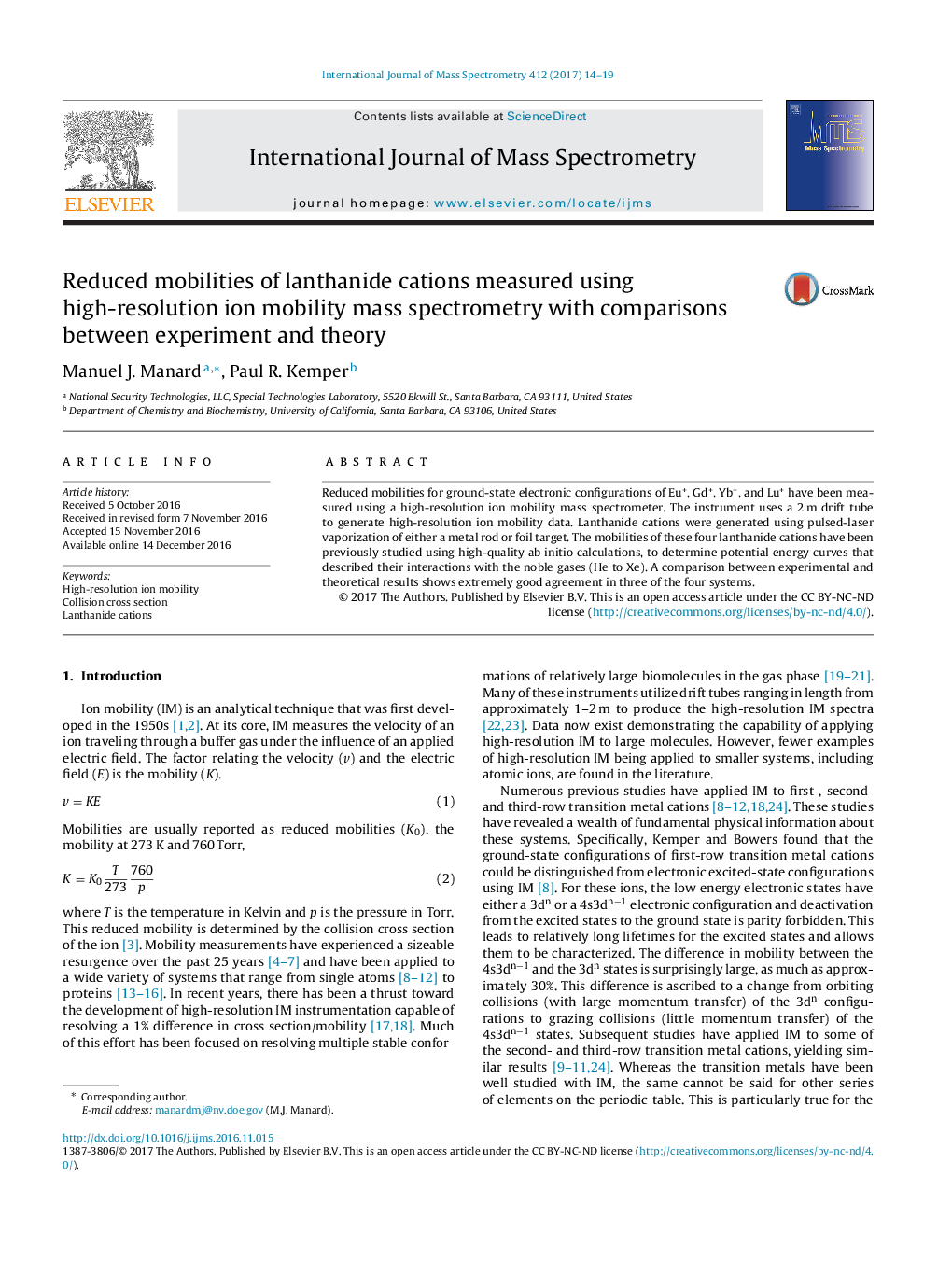| Article ID | Journal | Published Year | Pages | File Type |
|---|---|---|---|---|
| 5134258 | International Journal of Mass Spectrometry | 2017 | 6 Pages |
â¢The mobilities of Eu+, Gd+, Yb+ and Lu+ have been measured.â¢A comparison between experimental and theoretical mobilities is provided.â¢This is the first time the reduced mobilities of lanthanide cation in helium have been experimentally studied.
Reduced mobilities for ground-state electronic configurations of Eu+, Gd+, Yb+, and Lu+ have been measured using a high-resolution ion mobility mass spectrometer. The instrument uses a 2Â m drift tube to generate high-resolution ion mobility data. Lanthanide cations were generated using pulsed-laser vaporization of either a metal rod or foil target. The mobilities of these four lanthanide cations have been previously studied using high-quality ab initio calculations, to determine potential energy curves that described their interactions with the noble gases (He to Xe). A comparison between experimental and theoretical results shows extremely good agreement in three of the four systems.
Graphical abstractReduced mobilities for ground-state electronic configurations of Eu+, Gd+, Yb+ and Lu+ have been measured using a high-resolution ion mobility mass spectrometer. The instrument uses a 2Â m drift tube to generate high-resolution ion mobility data. Lanthanide cations were generated using pulsed-laser vaporization of either a metal rod or foil target. The mobilities of these four lanthanide cations have been previously studied using high-quality ab initio calculations, where potential energy curves were generated to determine their interactions with the noble gases (He-Xe). Thus, a comparison between experimental and theoretical results is provided.Download high-res image (104KB)Download full-size image
